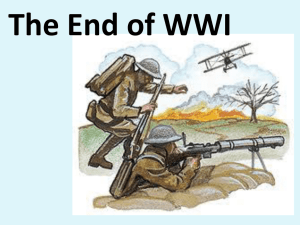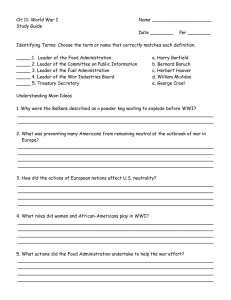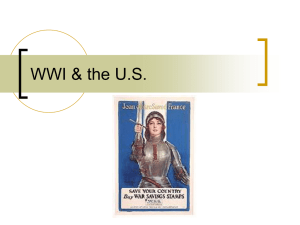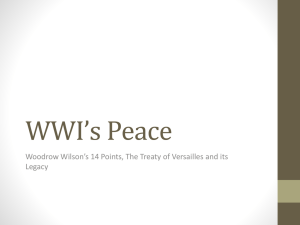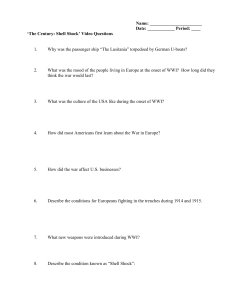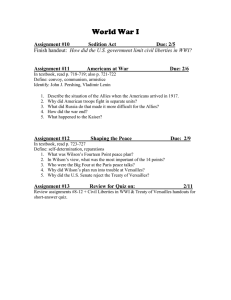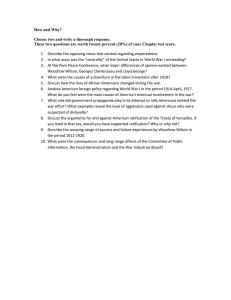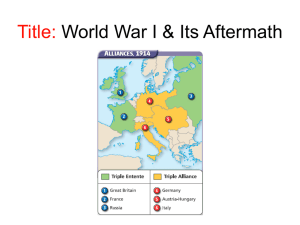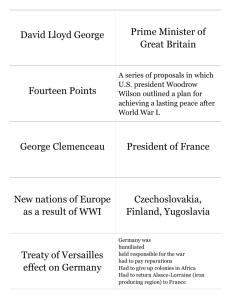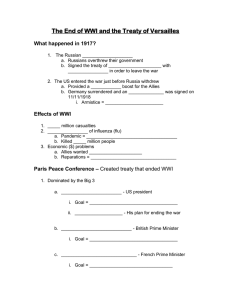The End of WWI
advertisement
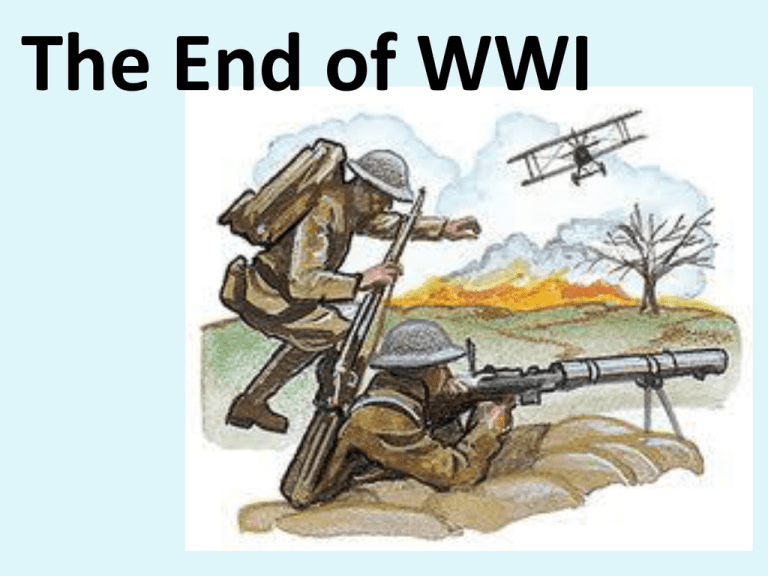
The End of WWI 1917 The Russian Revolution – Russians overthrew their government – Signed the Treaty of Brest-Litovsk with Germany in order to leave WWI The US entered the war – Provided morale boost for Allies – Germany surrendered, signed armistice i. definition: a cease-fire (11/11/18) Effects of WWI – 8.5 million casualties – pandemic of influenza (flu) • definition: spread of disease across a country/continent • killed 20 million people – $ problems: • Allies wanted reparations • definition: payment for damages Paris Peace Conference dominated by the “Big 3” 1. Woodrow Wilson, US President –goal: “Peace without Victory” –14 Points – His plan to end war 2. David Lloyd George, British P.M. –goal: punish Germany 3. Georges Clemenceau, French leader –goal: weaken Germany Woodrow Wilson David Lloyd George Lloyd George and Churchill Georges Clemenceau Vittorio Orlando The Big Three (Plus one) Problems at the meeting: Wilson forced to compromise on many 14 Points, but NOT the League of Nations – a worldwide peacekeeping organization Treaty of Versailles Officially ended the war Terms for Germany: – Germany blamed for causing WWI – Germany forced to pay $30 billion in reparations – Alsace & Lorraine given back to France – Germany lost all colonies; Britain and France took them over – Had to reduce their military to a 3-5-5 ratio to that of Britain and France Terms for Ottoman Empire & AustriaHungary – both empires split up to prevent being strong in the future – Yugoslavia – State created for the Slavs Unhappy countries – Germany – Punished too harshly – Italy – Did not gain land in A-H – Japan – Did not get to expand into China – Russia – Did not get anything – US – Compromised on Treaty Why is this a problem? • These problems will lead these countries to fight once more in World War II.
